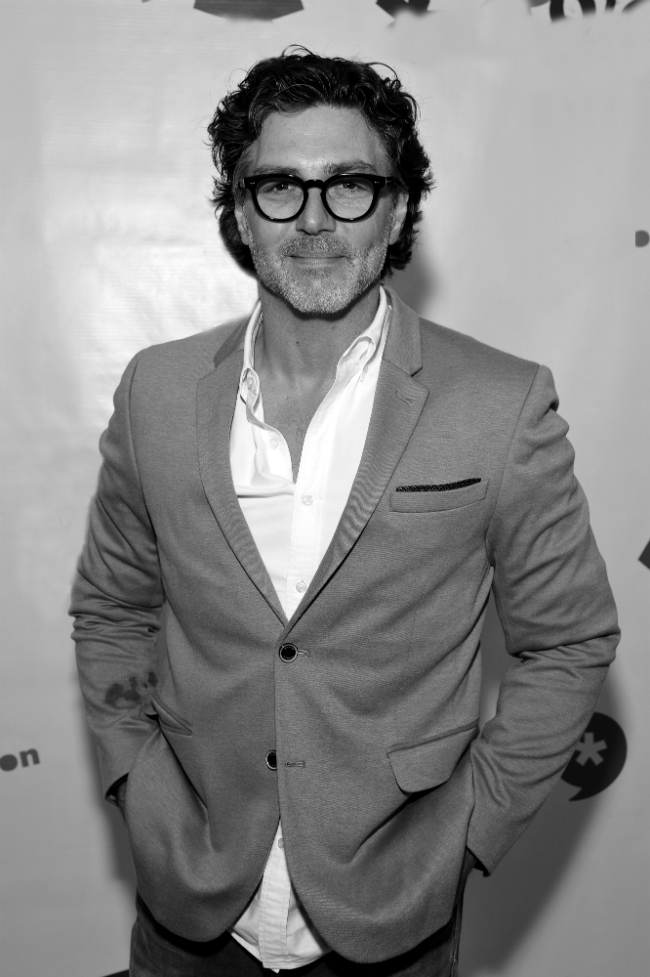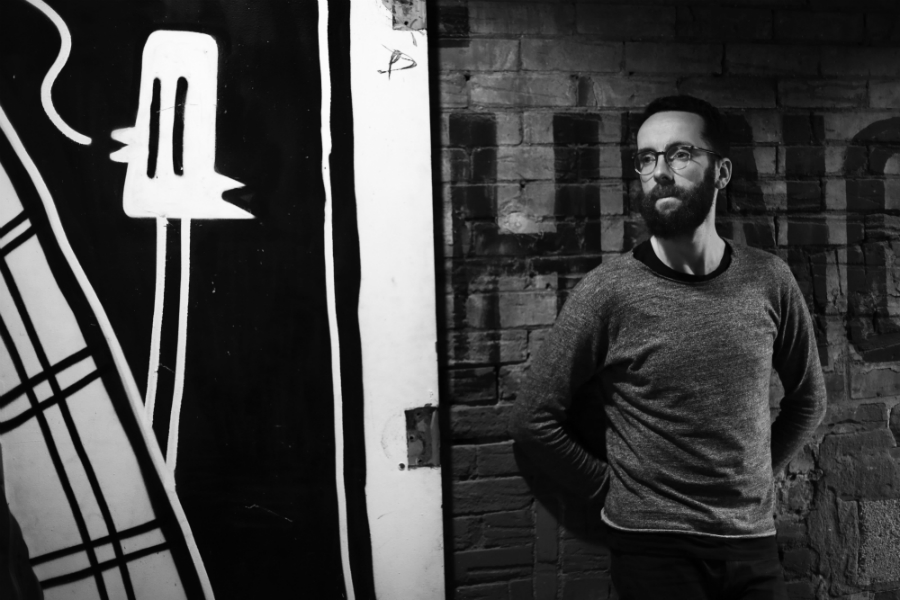A buff young man, the embodiment of clean L.A. living, is leading us upwards through the fragrant brush from the trailhead at Sunset Boulevard and the Pacific Coast Highway. He is normally a personal trainer but has been seconded for the day to lead our group of adventurers on this hike because, he says, he is such a fan of the product. The product in question being the chic little white Dosist cannabis vape pen, which is the primary adventure on our agenda.
We each have a couple of Dosist pens in our pockets, curated to elicit specific moods that pair with the nature experience. Today’s journeys are Bliss (to tie in with the view) and Relief (in case of muscle soreness later). You won’t have seen the pens but may recognize the ubiquitous — and deliberately vague — billboard and online campaign “Not Available in Canada.”
Dosist is a Canadian company that was founded in and currently operates in California and was inspired by Humboldt County (which is So-Cal’s legendary cannabis-growing region). It is aiming to pique brand awareness and inspire Canadians to advocate for the availability of such “controlled solutions.” This strategy is because Dosist pens are not yet legal in Canada and won’t likely become so for at least a year past the Oct. 17, 2018, initial legalization of cannabis flower and oils. That means that the advance publicity machine is in high gear.
Many varied and hopeful cannabis brands are all scrambling for a piece of the giant green pie. It’s a Wild-West scenario wherein a brand-new industry launched overnight in place of the $10 to 30 billion illicit black market. Legal cannabis now has extensive restrictions on advertising, sampling and the usual tools of modern marketing. Which is why our little Canadian press group is here, hiking with a pot-friendly be-muscled trainer, to experience the effects in a natural habitat and report back to our homeland. (Dosist is legal in California if purchased in licensed dispensaries.)
RELATED: For more on the latest on cannabis, check out the free livestream of Moses Znaimer’s ideaCity which runs from June 18-21 at Koerner Hall in downtown Toronto. The talks on cannabis are scheduled for June 19 at 10am.
The pens are little white tubes that were likened in The Atlantic to high-tech tampons. To me, they have more of a sleek, rounded Apple-gear feel, design-wise. They come in six different formulations: Sleep, Calm, Arouse and Passion, in addition to the ones in our hot little hands. Each pen delivers 200 hits of very low-dose cannabis — 2.5 mg in each inhale, and the unit vibrates when you have reached that exact dose — in a system designed to reach the precise heat needed for clean vaporizing of the concentrated, regulated product.
Most vape pens are built on the e-cigarette model and blast the cannabis flower at 2000 Fahrenheit, which obliterates much of the delicate oil. In California, the Dosist pens cost about $100 (retail cost is estimated to be $120 in Canada when they do become available; there are also 50 dose sizes that will be $49 but, hey, value in scale). They are personal units made for solo use; these aren’t spliffs to pass around at a party.
We make our way to the summit, where the impossible California sunshine glints off the ocean like a sprinkling of diamonds. And that is before the cannabis consumption. Our guide says his favourite pen is Relief for when he gets home, to transition out of his day and into his off-duty groove, akin to taking off his work outfit. But Bliss is his choice for outdoor pursuits.
The ratio of the Bliss pen is 9:1 THC (the psychotropic cannabinoid) to CBD (the calming, anti-inflammatory cannabinoid that is more body stone than mind game). Billed as “feel the right amount of good,” the effect is immediate and very subtle. I’m starting to buy into the marketing pitch: how low-dose cannabis is a means to transition yourself gently to a better state. Not high, exactly, not distracted or paranoid or obsessed with Omigod how high do I look? It is just you, with the sharp edges blunted, the way you might feel when you take the first sip of a glass of wine at the end of the day.
But more importantly, the experience is seamless. There is no smell at all. It is the skunky whiff that always turned me off pot, something I associated with the cool kids in lumberjack jackets in the smoking section behind my rural high school. I did come of age at peak Cheech and Chong, but I was deeply nerdy, and pot was never my thing.
I took this gig precisely because I am ambivalent about cannabis and I suspect I am representative of a large swathe of my generation. Like most, I haven’t used it much since university. I do have very stylish, successful, professional friends who love it and who seem to function elegantly on it; I just don’t like smoking and, besides, I am one of those people who never knows how it is going to affect me. I fear being too high and, for decades, I was convinced everyone was smoking wheelchair weed (a slang term for very strong hydroponic cannabis back in the old, unregulated days) that would knock me flat on my ass, drooling and unintelligible.
Worse, I have trouble keeping my cool around stoned teens – luckily, my own never took to the practice, but I’ve been uncomfortable around enough goofy, giggly kids to swear off myself for fear of being a big fat hypocrite of a grown-up.
On the other hand, I am intrigued by claims that cannabis can help with the inflammation, anxiety, aches and pains of daily life, especially as we age. And I’m curious about how I could substitute a low-dose equivalent for a glass of wine to unwind. I just can’t drink with impunity anymore; it tires me out, as many of my peers also report. But dammit, sometimes the world needs a wee bit of softening.
Softer words are also at the heart of the cannabis revolution. Cannabis is what we are all now supposed to call the plant and its flower, known and used for millennia for medical and ritualistic purposes. The key industry voices have conspired to strip the brave new green world of all its naughty nicknames. This is about reducing stigma, people.
Enter Derek Riedle, the founder of Civilized, a chic and smart online magazine (civilized.life) looking at life through the lens of cannabis. He is based in Venice Beach, Calif., and St. John, N.B.
At ideacity 2018 (ZoomerMedia founder Moses Znaimer’s annual conference), where there was a segment exploring the expanding cannabis world, Riedle talked about how our culture has been “elevated” (a popular word in cannabis marketing) at a fast pace in the last couple of years.
“Public support for the new cannabis industry depends on education, changing perception and reducing stigmas. We need to get past the dated stoner stereotype.” He notes the difference between a legal versus a social licence to indulge. “We need to break free of the cannabis closet that has been created by prohibition,” says the sleekly dressed creative type (salt-and-pepper beard, architect glasses). A “Friday night” toker for years himself, Riedle commissioned research that showed most cannabis users are not “basement dwellers”: in fact, a quarter of North Americans indulge, with half of that number earning more than $50,000 a year. And three-quarters of team cannabis are also regular exercisers.

Many Canadians are already out of the closet; there are more than 300,000 medical marijuana card carriers. Also at ideacity was John Fowler, the CEO of Supreme Cannabis Company, who sees the future in looking at cannabis as a consumer packaged good. Indeed, the fast-growing sector is sourcing much of its executive talent from the ranks of those industries.
But it is really “the visionaries of the California wine industry” Fowler thinks should serve as a guiding light. Connoisseurship, as in, selecting better quality weed that has been aged (“cured” is the cannabis equivalent) and is from a recognized producer (with Wine Spectator-style critical reviews and ratings) is a better way forward than encouraging a race to the bottom price-wise with generic product.

Alan Gertner, the co-founder of the Tokyo Smoke brand (which is now owned by Canopy Growth Corporation, upon its purchase last summer of Hiku Brands, a recreational and medical cannabis company that has several other subsidiaries), didn’t wait for legalization to put his luxury cannabis lifestyle plan into motion.
Up until Oct. 17, the brand was about seven coffee shops across Canada selling “elegant” and, again, “elevated” and “high-design” cannabis-related lifestyle products, and coffee with a side of cannabis information seminars.
After legalization, the shops became retail destinations in some provinces and will pursue other opportunities duly as the legal landscape unfolds. This reflects the hodge-podge of different distribution implementations across the provinces.

Legalization, he says, “is a special moment. It will never happen again in my lifetime, when a legal market emerges for the first time with an incredible pre-existing user base.” Gertner comes to the cannabis field from a background at Google, management consulting and tech start-ups. His co-founder at Tokyo Smoke is his father, Lorne Gertner, a fashion industry legend in Canada. Lorne was the long-time president of Mr. Leonard, and it was the 63-year-old father who led his son into the cannabis field as a partner in a company licenced to grow medical marijuana in Canada in 2004.
It was dad Lorne’s quest for an enveloping luxury cannabis experience that provided the a-ha moment for Alan. “My father could make thoughtful decisions in clothing and coffee but didn’t feel like he had an equivalent home in cannabis.” Gertner points to the Starbucks example: “They did a pretty amazing thing 30 years ago. They taught North Americans about latte – the nomenclature, the coffee-house experience. This was an opportunity to do the same thing with cannabis.”
To this end, he says, marketing terms – rise, equalize, pause –
are crucial to get consumers to understand how to integrate cannabis into their lives. Rather than create new behaviours, he says, cannabis will ultimately be integrated into existing behaviours, with consumers swapping out a beer for cannabis or a sleeping pill for cannabis.
The wedge, as California has found, is in the wellness area. Which Gertner points out is of big interest to older Canadians. “What is so exciting about legalization, all the potential uses of cannabis, but especially as a substitute for alcohol in the 45-plus segment. Alcohol is fundamentally not good for you, not to mention calories and hangover.” Cannabis, by contrast, can be used to relax or relieve stress or pain “with a better quality of life.”
All platforms of the Tokyo Smoke brand, retail and online, will continue on with its current Higher Education mission (their lingo), to teach new cannabis consumers how to use it as part of a stylish lifestyle, from bud basics to interactive how-to-role-a-joint seminars to tips on cannabis and socializing.
Consider this sage advice from TokyoSmoke.com contributor Katarina Kostovic that takes the kind of connoisseurship of experience we usually see in the fine food and wine fields: “Cannabis has different types of families that are known for their particular effects. Haze strains are considered the life-of-the-party, with intense sativa characteristics such as euphoria, high energy and giggles. Skunk strains are said to facilitate feelings of introspection. Kush strains are a different calibre; they are said to provide deep body relaxation while leaving the mind with a feeling of lightness and freedom.” Well, if you put it that way!
One of the biggest concerns around legalization is the fear people will be driving while high. In fact, a Desjardins Insurance poll taken last October showed 86 per cent of Canadians were worried about it. Hilary Black is Canopy Growth’s director of patient education and advocacy: “Now that cannabis has been legalized for recreational purposes, the issue of road safety has become increasingly important,” she says.

As the largest cannabis company in the world, Canopy has to stay out ahead on the message of responsible consumption. Listed on the TSX and NYSE, Canopy has a market capitalization of $21.9 billion and has begun expansion into European markets.
Canopy’s recreational consumer brand in Canada is called Tweed. On the website, you will notice a cheerfully responsible approach to
taking cannabis experimentation – “low and slow” in dose and pace. This is noticeably contrasted to the cheekier content of the hipper lifestyle brands.
“The driving force behind our CSR initiatives,” says Black of the Tweed brand, “is a dedication to using our position as a leader in this industry to create solutions to cannabis-related issues.”
To that end, they have partnered with MADD to get out the message not to drive under the influence of cannabis. Another feel-good and do-good initiative is the pioneering of recycling programs for all cannabis packaging.
Meanwhile, we are still only on phase one of the rollout, and there is more lobbying to do. Dosist president Josh Campbell spent last summer lobbying the Canadian senate to increase the scope of legalization to include concentrates for controlled options, such as his company’s pens. Dosist pens promise dependable, buildable results, based on scrupulous testing and regulation in the U.S. and in Canada as they become available, Campbell says. He himself comes from a consumer goods background (hearing aids and Saje Wellness essential oils) and talks about “need states.”
“We started with trying to understand why people use cannabis: to sleep better, to relax, to have better sex,” he says, from poolside in California. “We started with the why in building the products.”
Indeed, the idea is that these are mood-altering companions designed to be paired with activities throughout your day. Therefore, our group also vapes before a spa appointment, before lunch at SoHo House Malibu, at a group meditation session in the Valley and, of course, before sleep at the Viceroy (overlooking said pool). The Passion and Arouse pens, which quite literally are designed to be used for sex and seduction purposes, were paired more tamely with a sunset walk along the Santa Monica pier. I can’t myself always tell the difference between the pens, but all the paired experiences were extremely low key as per the low dose and very pleasant indeed.
Campbell worries that the wait-and-see approach of a year of flower-only sales could lead to disappointing or negative experiences for first-time (or first-time since college) users in the 45-plus market that is a key target for his turnkey solution low-dose pens.
I myself did not rush out to buy any little packages of cannabis flower on Oct.17 for exactly that reason. I just don’t know enough or trust my mad scientist skills to experiment. And also I can’t roll to save my life. I would use the Dosist pen, though, partly because it is so chic but mostly because it is so subtle. And I forgot the most important thing: I’m relieved to report Dosist doesn’t give me the one thing I won’t miss from university: namely, the munchies!
RELATED:
The Question of Cannabis: A Doctor’s Assessment of the Risks & Benefits of Marijuana
